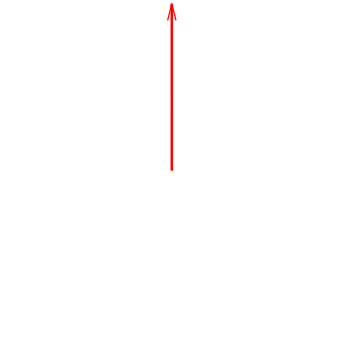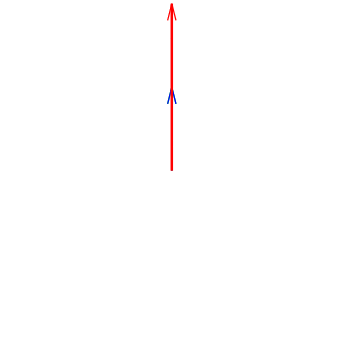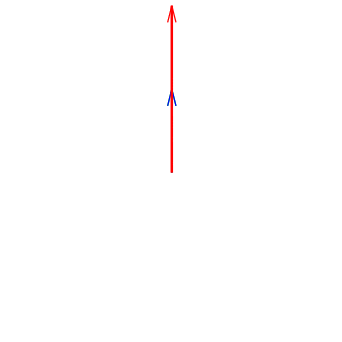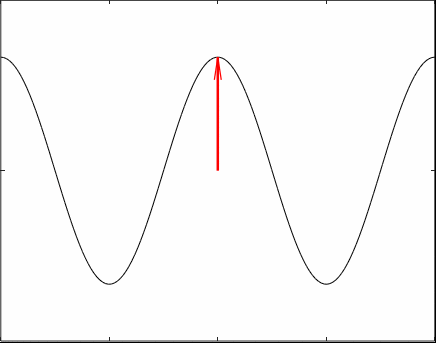Faraday Rotation: What is it?
Most microwave engineers have not studied ferrite components even if they have taken microwave engineering graduate classes. If you did take a microwave engineering course, the chapter about ferrimagnetic components was most likely near the end of the book, and you probably were glad of it! After all, every component up to that point was reciprocal – acting the same between two ports regardless of direction. However, ferrimagnetic materials are anisotropic meaning that the direction of signal flow matters. As irritating as this sounds, it is that very property of ferrites that makes them so useful in components such as isolators and circulators.
In addition to that elusive property of non-reciprocity you are also required to apply a magnetic bias to the ferrites in these components. Magnetism seems to be uncontrollable, difficult to measure, easily altered (by providing a more attractive path for the field to travel), and in general, just plain mysterious.
Who in the world would want to design and build ferrite components?
That’s the very question that I asked Dr. David Porterfield, our CTO, when he offered me a job at Micro Harmonics Corporation (MHC) in 2015 as he launched his initial research into isolators and circulators. David had earned his reputation by designing frequency multipliers – a whole different part of the millimeter-wave (MMW) world. His answer was telling: “Not many people would want to do this, which is exactly why we are doing it.”
These ferrite components, with their anisotropic properties and magnetic bias fields, are absolutely crucial to MMW systems. They use a phenomenon described many years ago by the brilliant scientist Michael Faraday. Here is a brief explanation of what is called Faraday rotation.
Let’s look at a linearly polarized electromagnetic wave.
This simple traveling wave animation shows that as the wave travels, if you stand at a particular point the amplitude of the wave varies in a linear fashion.
Now let’s shift our point of view so that we are looking into the oncoming wave. The polarization is shown as a vector with varying magnitude in the positive and negative direction, but always along the same line – linearly polarized.

Linearly polarized signals can be considered (and shown mathematically) to be circularly polarized signals having both left-hand circularly polarized (LHCP) and right-hand circularly polarized (RHCP) components.

Linear polarization occurs because the LHCP and the RHCP components are rotating at the exact same rate. We can show how the RHCP and LHCP (green and blue) components sum to result in the same linearly polarized (red vector) waves as shown before.
A ferrite is a dielectric medium in which an RF signal can propagate. But, if a magnetic bias field is added, magnetic dipoles are aligned within the material and propagation through the ferrite becomes more favorable to either the LHCP or the RHCP component of the wave, depending on the direction of the bias field. This faster rotation of one of the components causes the overall linear polarization of the signal to rotate. In a reciprocal device, if you rotate CCW with respect to the signal from port 1 to port 2, you expect to rotate CCW with respect to the signal when traveling in the reverse direction (port 2 to port 1). Whether you are traveling port 1 to port 2 or port 2 to port 1 you get CCW rotation from the perspective of the signal. But the anisotropic property of the ferrite creates a non-reciprocal device. This means that the absolute direction of rotation of the linear polarization is the same no matter which direction the RF signal propagates through the ferrite. So, if the signal rotates CW when traveling from port 1 to port 2, it will rotate CCW in the reverse direction. This is Faraday rotation.

So how is this Faraday rotation phenomenon useful in MMW systems?
In other words, why should I care about this? A common problem that millimeter-wave engineers must address is the standing wave.
In nearly every MMW system, there is certain to be a portion of the transmitted signal that is reflected at the input port of the next component in the system. That reflection very often interferes with the transmitted signal in such a way as to create a standing wave.
The reflection can even alter the performance of the upstream component or in a worst-case scenario, damage that component. What is needed is a way to allow the transmitted signal to propagate while absorbing anything that is reflected.
Let’s consider a Faraday rotation isolator.
A linearly polarized signal enters Port 1. As it travels through the ferrite, the polarization is rotated exactly 45° counterclockwise. This happens because the length of the ferrite is precisely calculated based on the rate of rotation of the polarization. The signal exits at port 2 and continues to the next downstream component. Invariably, some of that signal is reflected back into port 2 of the isolator. It travels back through the ferrite where it is further rotated in the exact same direction. When that reflection gets back to Port 1 of the isolator, its linear polarization is a full 90° rotated from the input signal and is absorbed in the isolator. The best isolator allows the maximum signal to pass through (low insertion loss) while absorbing the reflections and thus protecting the upstream component (high isolation).
In conclusion, the applications of microwave technology are vast and exciting, and Micro Harmonics is at the forefront of this field. Whether you’re conducting research, developing cutting-edge products or need help choosing the right isolator for a Millimeter-Wave System, our wide range of high-quality microwave components and sub-assemblies can help take your work to the next level.
If you’re eager to delve deeper into fascinating phenomena like Faraday rotation or explore the diverse range of Micro Harmonics’ products and services, be sure to visit our website or get in touch with us directly. Seize the chance to benefit from our extensive knowledge in microwave technology and elevate your work. Don’t let this opportunity pass you by!

